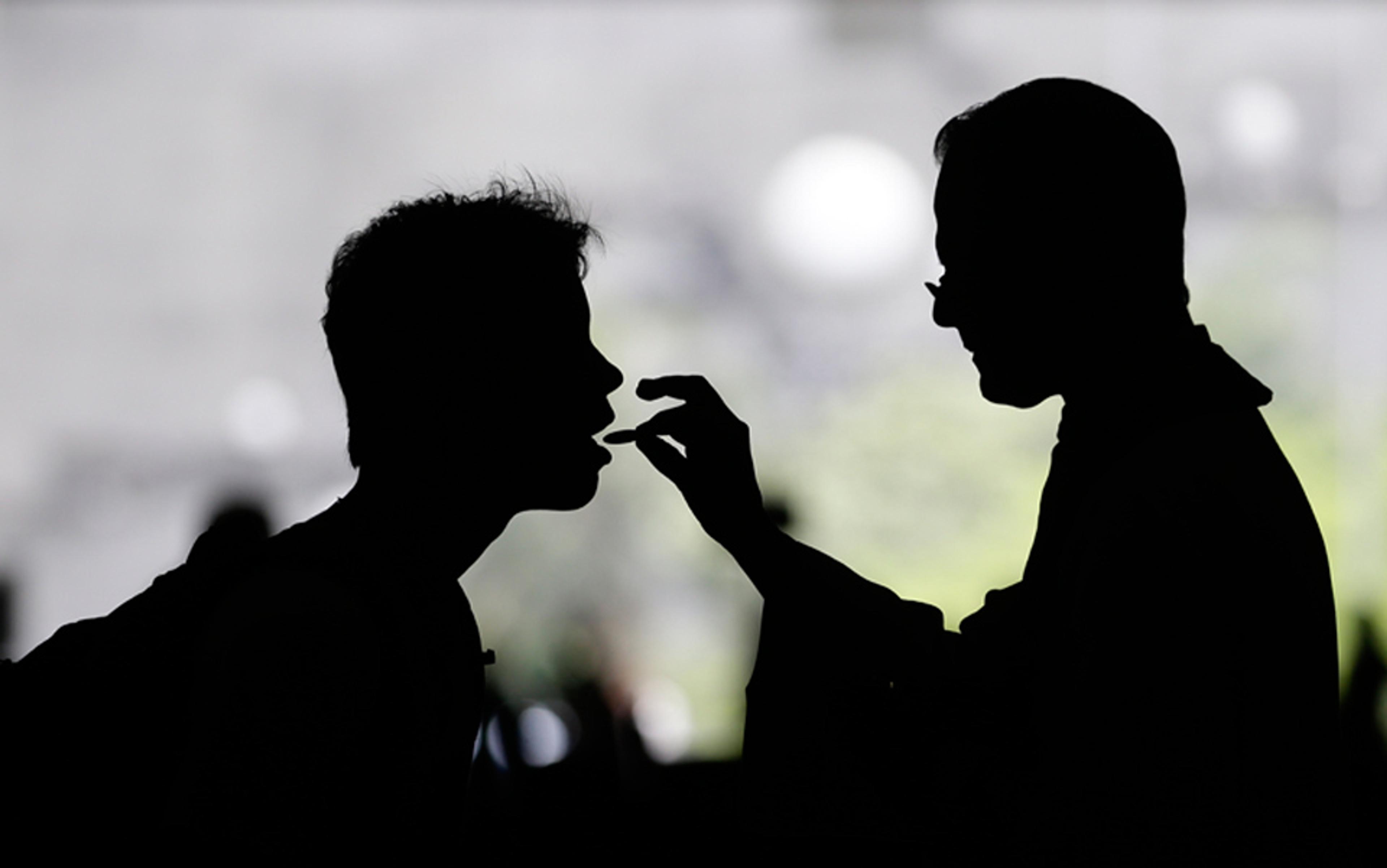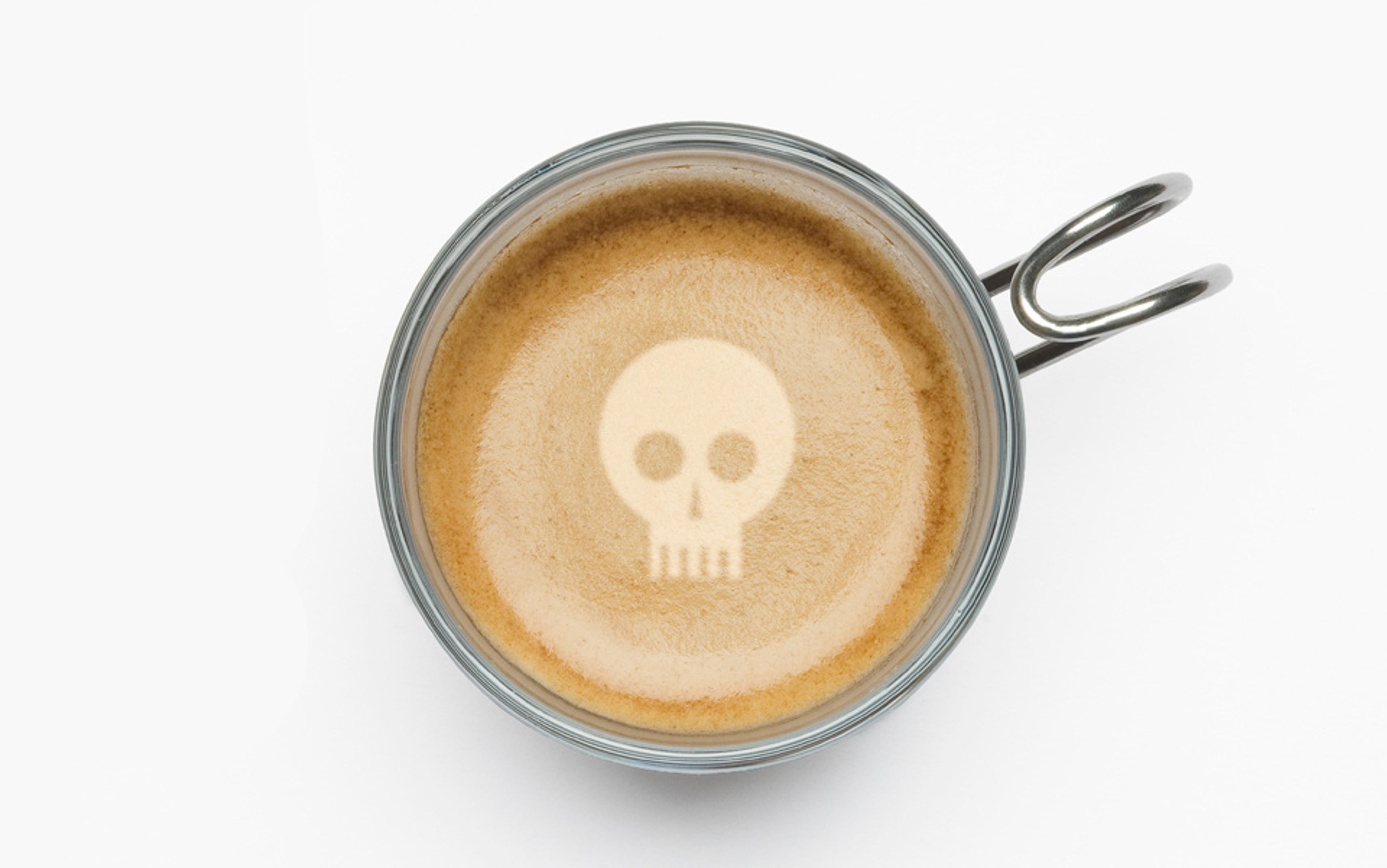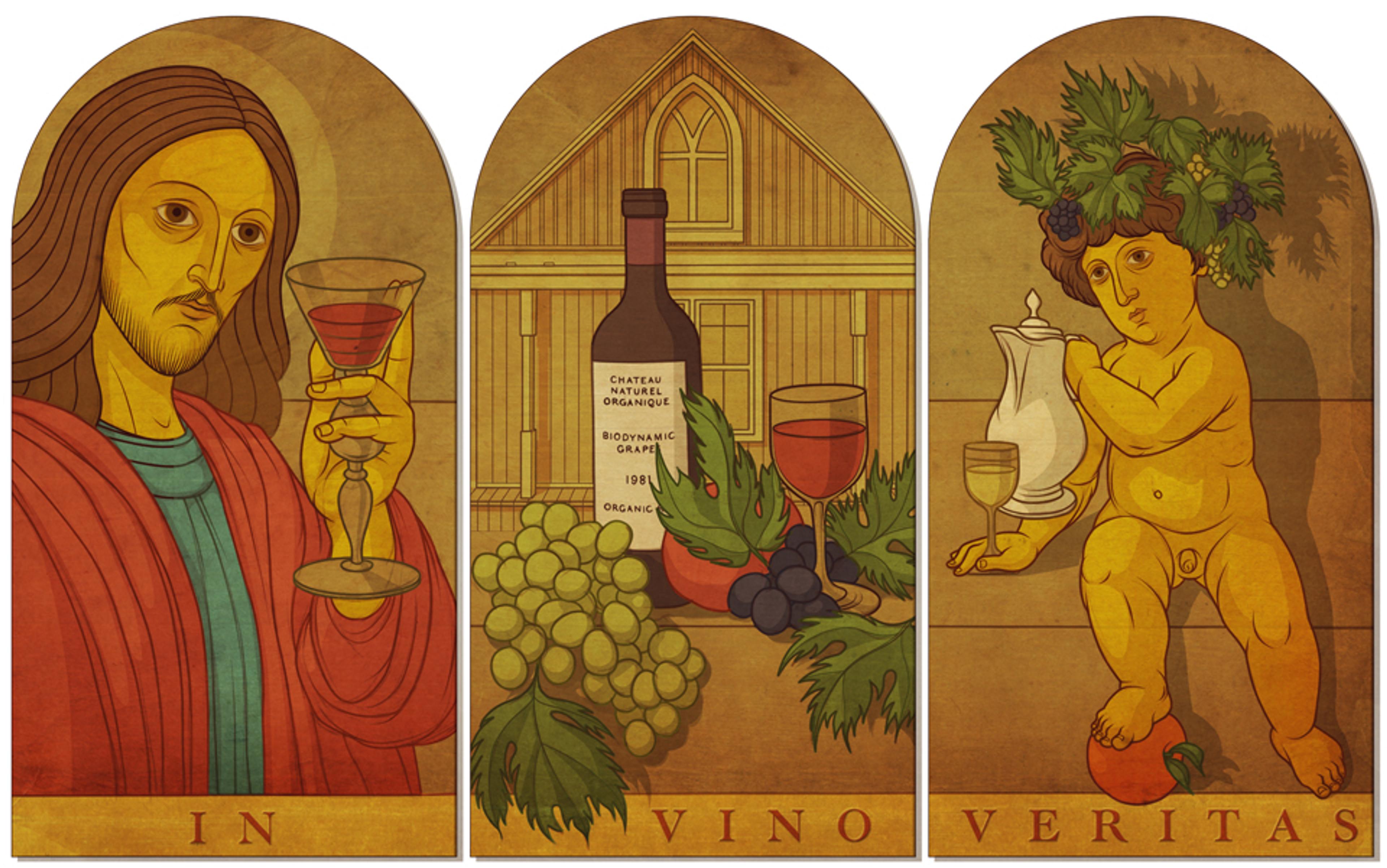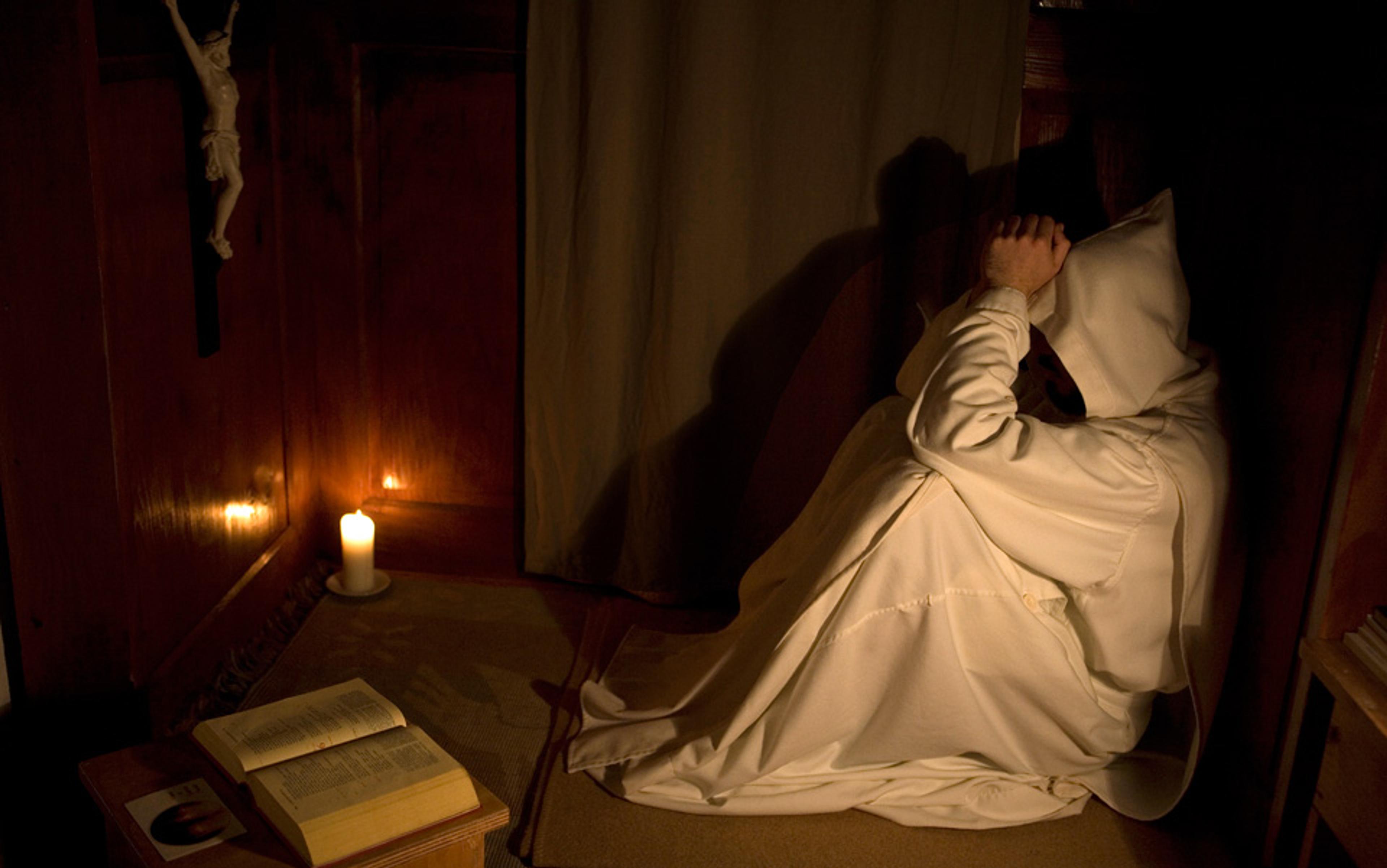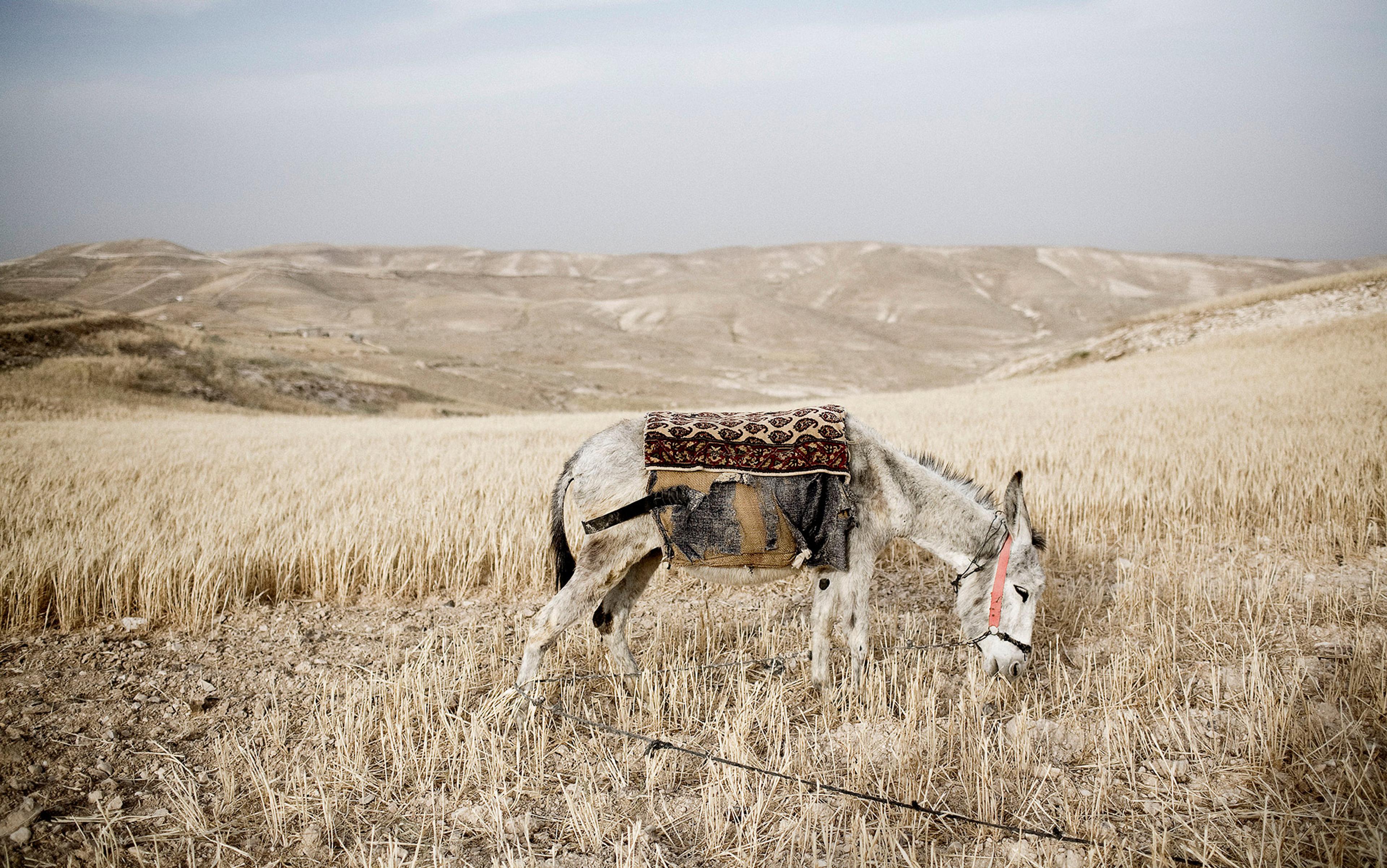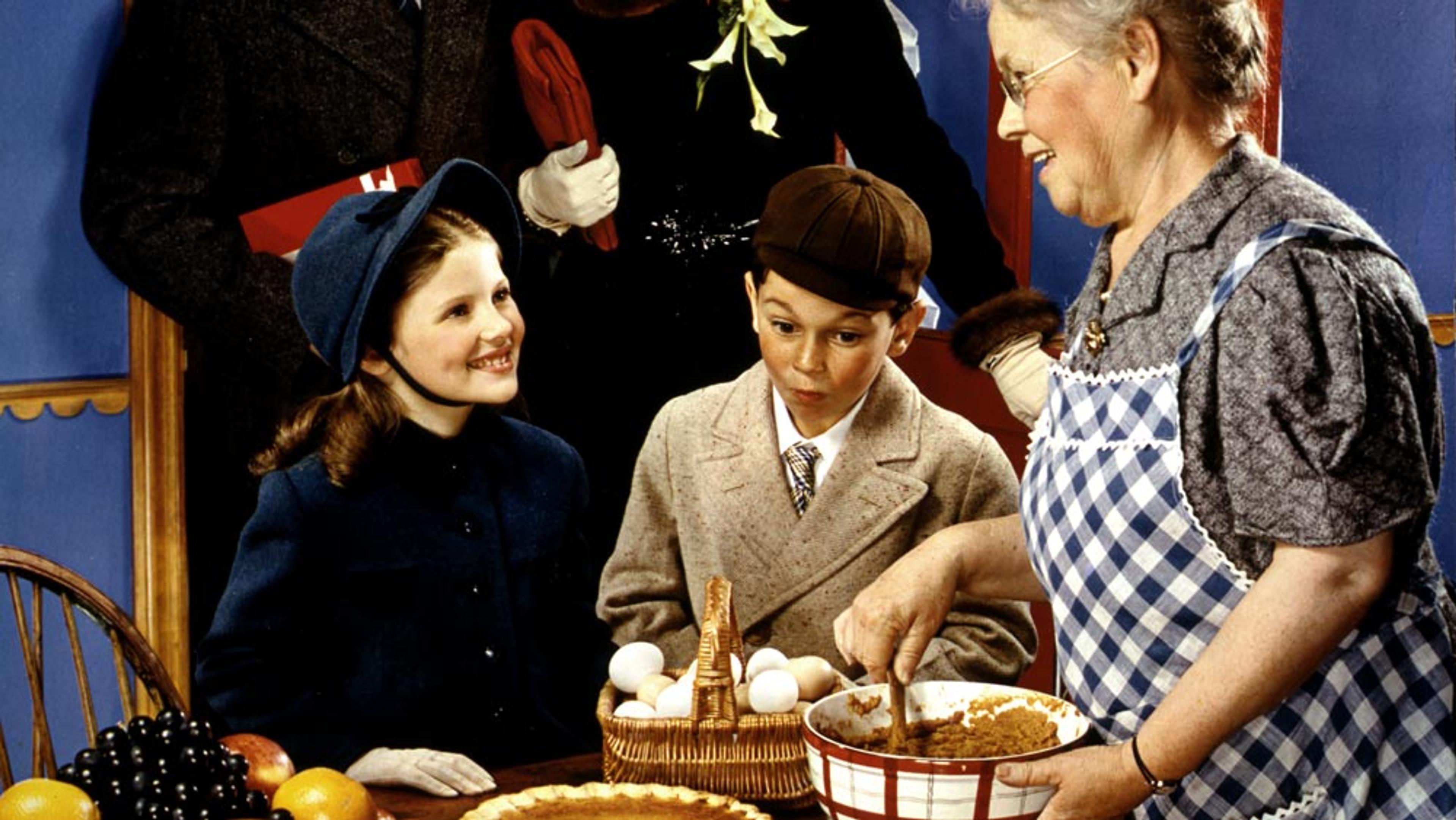Helen didn’t know me, but she loved me. I met her at the nursing home when the Catholic lay minister asked me if I would bring her, a Protestant, communion. He led me to her, sitting in the memory-care unit.
‘Are you Helen?’
‘Yes.’
‘Would you like to receive Holy Communion?’
Her face lit up.
‘Helen, this is the Body of Christ. It is given for you,’ I said as I gave her the wafer. I held her hand and prayed, and her head sunk onto my shoulder. When I was done, she looked at me and in a perfectly lucid, solemn voice said: ‘I love you.’
Each time I returned, it was the same: ‘This is the Body of Christ.’ ‘I love you.’ She did not know my name nor connect one visit to another, but she spoke as dementia sufferers often do, with conviction and urgency. Then one day I came to find her not in the common room near the birdcage or the big television but confined to her bed. ‘Helen, this is the Body of Christ, given for you.’ And the wafer, diaphanous and saliva-soluble though it was, simply stuck. She could no longer swallow. I hastily retrieved the disk of unleavened bread. ‘I love you,’ she said, all the same.
I put the wafer in the pocket of my clergy shirt. Four days later, Helen died. The wafer, the Body of Christ, that had been in her mouth, sat on my desk – bread, body, symbol, sacrament, now a relic. What should I do with it?
It was possible, surely, to simply discard the moistened but uneaten wafer. Possible, but theologically complicated. The action we call Holy Communion, Eucharist, Lord’s Supper and Mass is the most distinctive, characteristic ritual in Christianity, and the bread and wine we use in it become in some sense sacred.
Once embedded in an actual meal, the sharing of the staple foods of bread and wine re‑presented Christ in the form of his Body, the Church. The earliest Christians don’t seem to have set apart a particular person to ‘consecrate’ the meal, and the words attributed to Jesus – ‘This is my body, given for you; do this for the remembrance of me’ – were irregularly used, if they were used at all. A forest of explanations for this practice has grown up over the centuries, some quite far-fetched and some plausibly troubling to mainstream Christianity. But the heart of the rite – a community, bread and wine, and the ineffable presence of Jesus of Nazareth – proved remarkably resilient.
Of course, 2,000 years of continual practice around the world will occasion major changes in a ritual. Politics, metaphysics, and hermeneutics have made it a source of division since the beginning. Paul the Apostle’s first letter to the Christians in Corinth suggests that class differences interfered with the holy meal. Later on, the Greek and Latin churches would rupture enduringly over whether leavened bread or unleavened was required for the celebration.
The migration of Christianity into new regions and cultures saw it lose, gain or shift meanings. It took on characteristics of Roman sacrificial offerings. The holiness of a community and an event became concentrated in the elements themselves, as the meal setting slipped away. The bread and wine went from being shared around a table to being a distant and impersonal locus of divine power. Ritual tends to grow outward, and eventually even the making of the bread became religiously formalised. Helen’s wafer wasn’t made by monks, as the finest ones are, but I am assured that it comes from a ‘secure facility’.
As a universally and often fervently practised rite, it acted like a radioactive tracer in the body of Christianity
The host could be used to ward devils away from farm fields or as a love-charm. A woman mystic in the late-medieval Low Countries had an ecstatic, even sexual vision of Jesus when she saw the host elevated at the altar. In a play from the same era, a consecrated host is stolen (by impious Jews, as the anti-Semitism of Christian Europe required) and desecrated, only to bleed real human blood in proof of its bodily essence.
In Western Europe, Aristotle was brought in to explain how the breadiness of the bread could be squared with the words ‘This is my body.’ The doctrine of transubstantiation, most ingeniously expounded by St Thomas Aquinas, grew out of this project. The lay people, fearful of spilling God’s blood, instigated the removal of the cup from communion for all but the priests. As a universally and often fervently practised rite, it acted like a radioactive tracer in the body of Christianity. The marvellous creativity, diversity, poetry and neurosis of its forms and interpretations map out the whole interior of Christian life.
My own Lutheran tradition focused doggedly on sin and forgiveness, and so the sliver of bread/body and sip of wine/blood became a pledge of redemption. Now we worry about hospitality and inclusion. It’s an aesthetic choice, but I prefer the thought that this unstable mass of gluten and muscle swings the moral universe on its hinge. I should have had a little metal box (called a pyx) to hold Helen’s last wafer, at least for the trip from her mouth back to the church, a dignified place to await whatever it was that I would do with it. As it was, it was naked in my church office, pathos and power and irresolution there for me to see each day.
I didn’t grow up in a particularly churchgoing family, but when I drifted into Christianity through the variant peculiar to my Scandinavian ancestors, the bread and wine were central from the beginning. I received them every Sunday, and often during the week when I would slip into a little gathering in a Chicago church. I would kneel and nibble and drink and sometimes weep for unknown reasons before stepping back into a world made bright with the sheen of tears and the flush of blood. An instinct for reverence is probably what pegged me for a future pastor.
Week after week, I hear myself say it to a line of people: ‘The Body of Christ, given for you.’ It becomes marvellously instinctual for giver and receiver alike, a weekly rhythm punctuated with emotional staccatos. A new widow, perfectly coiffed and given to winking, comes through the line. ‘The Body of Christ, given for you.’ She lets herself cry then, of all times.
among modern Christians, it looks a lot less like a comprehensive worldview and a lot more like existential commitment
The vast groundswell of modernity separates me from the world that shed human blood over this synecdoche of a meal. It’s certainly possible to believe, as Thomas Aquinas did, that the wafer is truly and wholly body, with only the external form of bread. But what the philosopher Charles Taylor called the ‘conditions of belief’ are today utterly different, and fundamentally secular. Such a belief is now a special case where it once was part of the fabric of the universe. The high age of host miracles, violent controversies and Ave Verum Corpus has left a residue among modern Christians that looks a lot less like a comprehensive worldview and a lot more like existential commitment. Had Helen ever wept at the altar? I couldn’t know. But obviously someone had done for her what had been done for me, and what I had done for others.
Perhaps it’s what one of the pious characters in Marilynne Robinson’s novel Gilead (2004) called ‘loyalty to myself, at the very least, putting the Lord to one side’. I would like to fear fire from heaven or meeting a wounded, indignant Christ in the final judgment, accusing me from my old office wastebasket, but I don’t. Yet even if the meaning packed into that thing came wholly from me and from the culture Helen and I shared, it was a lot of meaning. I couldn’t throw Helen’s host away. I didn’t even consider it.
So… should I eat it?
That option presented difficulties of its own. Christians in the US, like US citizens in general, are more obsessed with health and hygiene than most. Pasteurised grape juice was invented here, quickly and tragically displacing wine in many Protestant celebrations of communion. And I can’t say for sure, but I would bet a significant sum that we invented those tiny individual cups, too – pre-filled for sanitary personal consumption, now disposable by the thousand where washing and reusing prove too burdensome. It is even possible to buy in bulk little packages of juice and a tiny wafer, sealed up and ready to pass through the pews so that no human hand need ever approach the elements. It’s a strange fate for things that were meant to be shared and that were intended to signify or even become a human body.
These developments have periodically been hastened by pandemic illnesses. The Spanish influenza of 1918 caused local health departments to suspend communion services in some places. The swine flu outbreak of 2009 saw churches in many countries cease using a common cup for the wine. The Ebola outbreak is doing the same in the affected countries (though even this modern development has led to a familiar reaction: the insistence that the fully transformed Body and Blood are incapable of transmitting disease).
Fear of biological contagion becomes hard to distinguish from fear of social contagion. When AIDS, which is not communicated by saliva, reached epidemic levels, many churches responded with panic and anger. The act of eating and drinking together doesn’t look especially intimate until the prospect of sharing a disease is raised. Taking on the risk, however modest, of sharing pathogens is a form of social solidarity, an acceptance of the other that can touch very deep insecurities. As the historical theologian Thomas O’Loughlin put it in The Didache (2010), his account of the earliest Christians: ‘The breaching of the boundaries of Graeco-Roman society at this Christian meal is one of the miracles of the early Church.’ I’m not sure that’s less true in the age of microbiology.
Relics, like memories, tend to proliferate and to evade authentication. They will fill the world if we let them
I didn’t know what process in Helen’s body was ending her life. I never asked. But that unasked, unanswered question gave the phantom bacteria coating her last wafer an ambiguous power. I don’t know how else to account for my reluctance. So it sat there, amid my papers.
I could, after all, have kept it as a relic. I visited a monastery church with an astonishing relic chapel, including the only complete body of a saint in the US: the martyr-saint Peregrine, whose shrine is in St John’s Abbey in Minnesota. The body was small – it had been dead for a good handful of centuries – and jewelled magnificently, waiting under an altar. The monk giving the tour handed out relics sealed in bottle-cap-sized vessels. Their sanctity did not seem to impress him terribly, though each of the monastery’s many altars had a little niche for a relic. Relics, like memories, tend to proliferate, evading authentication as they do. Necessary as they are, they will fill the world if we let them.
That would not be the fate of this piece of bread. I am not as adept at believing things as I once was, but I had to believe that this thing, if it was any kind of thing, was a subject and not an object.
Helen’s funeral was in her hometown in southern Illinois. Her place by the birdcage in the nursing home was swiftly reoccupied. I met her daughter briefly but forgot her name. Helen had never been able to give me anything but her adamant insistence that she loved me. And now this piece of bread – which had caused us to meet who never would have met, which animated her face with joy, which centred her identity in something outside of the ruin of her last days – this was my memento, not just of the Jesus we both claimed in our ways, but of her. It had imparted some last molecular grace, and picked up some saliva and mouth cells. It was her, after her. When it was gone, she would be gone.
I ate it.
A ritual acts on us in a way that is deeper than words, deeper even than conscious thought. The words and thoughts change, after all, the scholars of religion tell us. As it is in the history of a religion, so it is in the course of a human life: the etiologies, the just-so stories, the philosophical and ideological layering all arrive late and leave early. The act itself somehow lingers underneath it all. Like a pebble in the shoe or a warm bath, it changes our minds despite our minds.
We say in church that participating in the sacrament makes Christ part of us. But in this way Helen became part of me, too. Whatever else one wishes to claim for this ritual, it is a communing with the dead. Every religious ritual is. It’s a way of putting on a self we can never be, of identifying with people otherwise lost to us, of inhabiting a past we can probably never understand. That might be the last radical lunge of this shrunken supper in a life that is starved for, if not love, then at least for connection.
